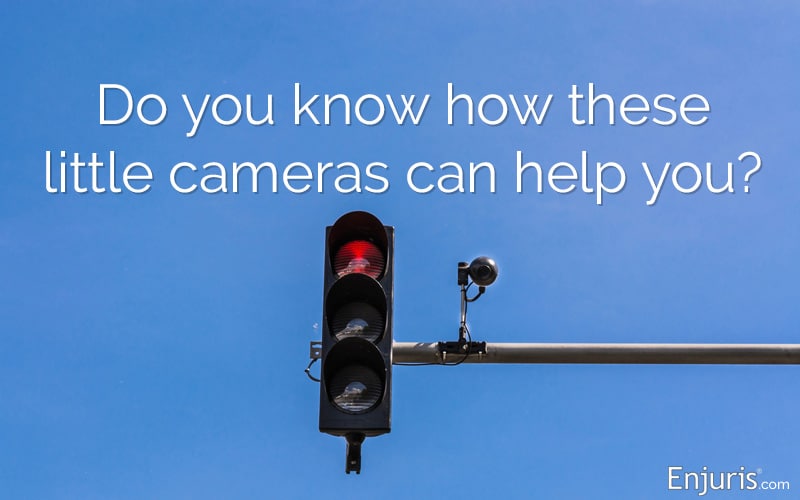
Parties to personal injury lawsuits are using red light camera footage to prove how an accident occurred
One of the reasons why lawsuits can be unsuccessful is that sometimes fault for an accident can be impossible to prove. A red light camera might change those outcomes.
If you were in New York City in the early 1990s, you might have passed through an intersection with one of the first automated red light cameras in the nation. There were as many as 533 U.S. communities that had installed red light cameras by 2012, though some have been discontinued because of opposition and lack of funding.
As of early 2022, there were still more than 300 communities in 22 states and the District of Columbia that use automated red light cameras. In some jurisdictions, a ticket for failing to stop at a red light as indicated by a camera would be a moving violation; in others, it’s a civil offense.
How do automated red light cameras work?
A red light camera photographs the vehicle’s license plate if the driver fails to stop at a red light. The driver then receives a traffic citation (ticket) in the mail. Some red light cameras are installed in areas where traditional police surveillance or traffic stops would be unsafe or logistically difficult.
One reason why red light cameras were instituted is that disregard for red lights is a major risk for crashes and fatalities. More than 800 people died in red light running fatalities in the U.S. in a recent year, according to the CDC.
Since red light cameras were implemented, studies show that there wasn’t a significant decrease in rear end injury crashes, but there was a decrease in right-angle crashes and injuries.
Why are red light cameras controversial?
Public safety can benefit from red light cameras because they allow for tickets to be issued to violators easily and efficiently. The footage from a camera also can benefit a party to a personal injury lawsuit where there’s a dispute about how an accident happened—sometimes, the camera photos are the only evidence that proves which driver had the right of way.
However, some critics say that the cameras are unconstitutional. This argument suggests that the cameras deprive a driver alleged to have committed a violation of the fundamental right to confront the accusing party. The Sixth Amendment provides a criminal defendant to be confronted by the witnesses against them; because it’s camera footage and not a human that “witnessed” the infraction, it cannot be considered criminal—it’s a civil fine. The ticket is issued to the vehicle's owner, who might not have been driving at the time of the camera recording.
How do red light cameras affect personal injury lawsuits?
When there is significant personal injury or property damage, photographic evidence that proves the fault of one driver is invaluable to a lawyer or insurance company making (or defending) a claim.
Sometimes, photographic evidence proves facts that otherwise would not be able to be proven.
In other words, while critics argue that red light cameras could be problematic in charging drivers with moving violations, it’s undisputed that they are a valuable tool for resolving disputes of fact in personal injury lawsuits to hold the appropriate party responsible.
How do I access red light camera video to prove my claim?
Police officers and lawyers may access camera footage that’s maintained by a highway department or municipality. How they request this information might vary from one municipality to another.
If you’re in an accident, there are other ways to prove your case, too. If there isn’t a red light camera that captures the accident, there could still be other photographic evidence. There could be non-involved drivers who have dash-cam footage, bystanders who have mobile phone video, or video surveillance from homes (Ring doorbell cameras, for instance) or businesses with closed-circuit television.
If the location is near a home or business, it’s worth asking the owner if it’s possible that there’s security video available, but act fast—many businesses only save video for a short time. If the business owner isn’t even aware that an accident happened, they might not have had a reason to save it. A private business (and certainly a homeowner) is under no obligation to keep the video and, depending on their system’s storage, they might record over it daily.
If you were in an accident and you’re wondering if there’s video or photos available to help make your claim or prove how the crash happened, seek the guidance of a qualified personal injury lawyer near you. Your lawyer will know if there are red light cameras in your area (and specifically at the accident location) and can help find other evidence that can bolster your claim.
Dash Cam Laws by State: What To Know Before You Go
Dash cam laws vary by state. Learn where dash cams are legal, restrictions on audio recording, and how to stay compliant with local regulations.

